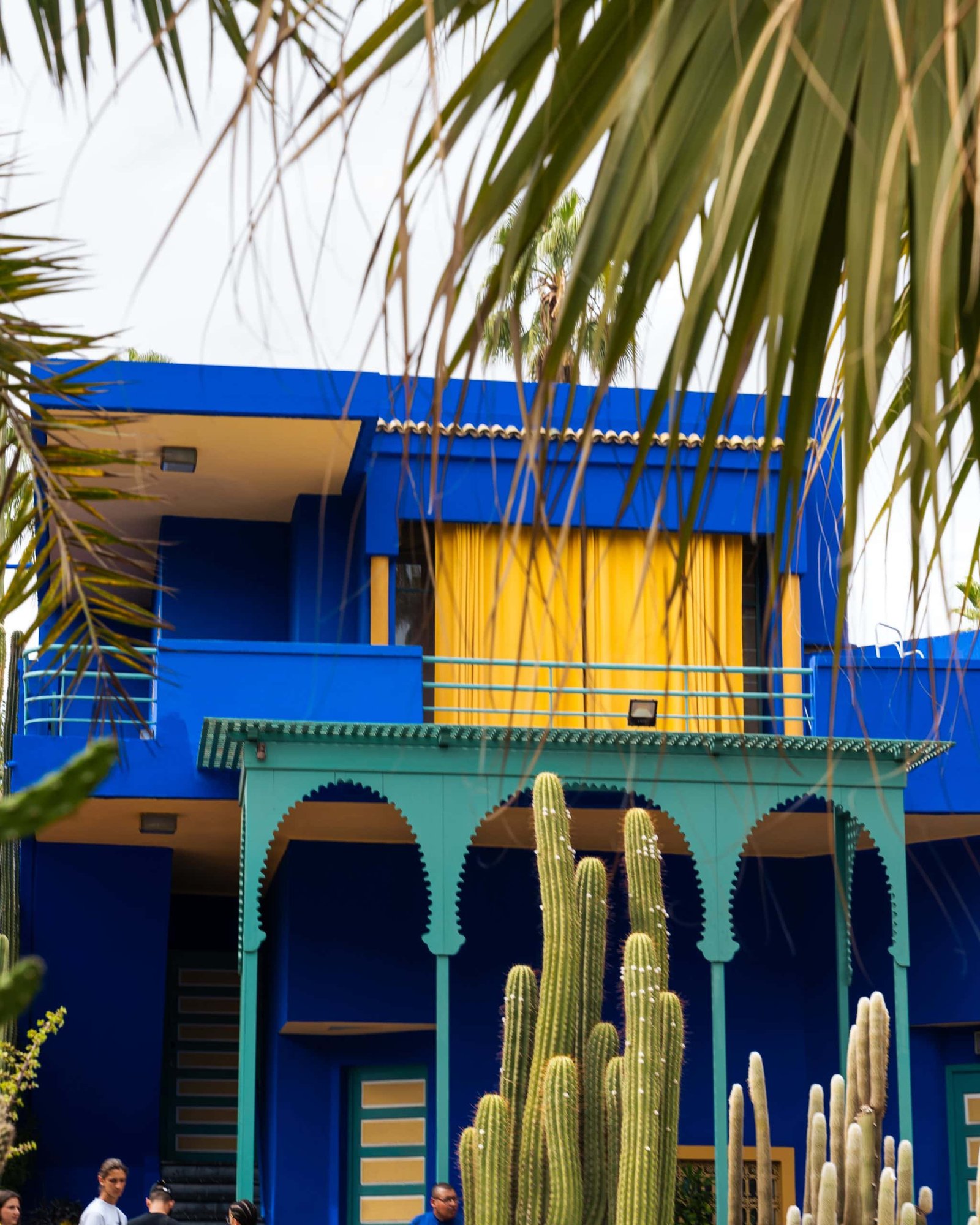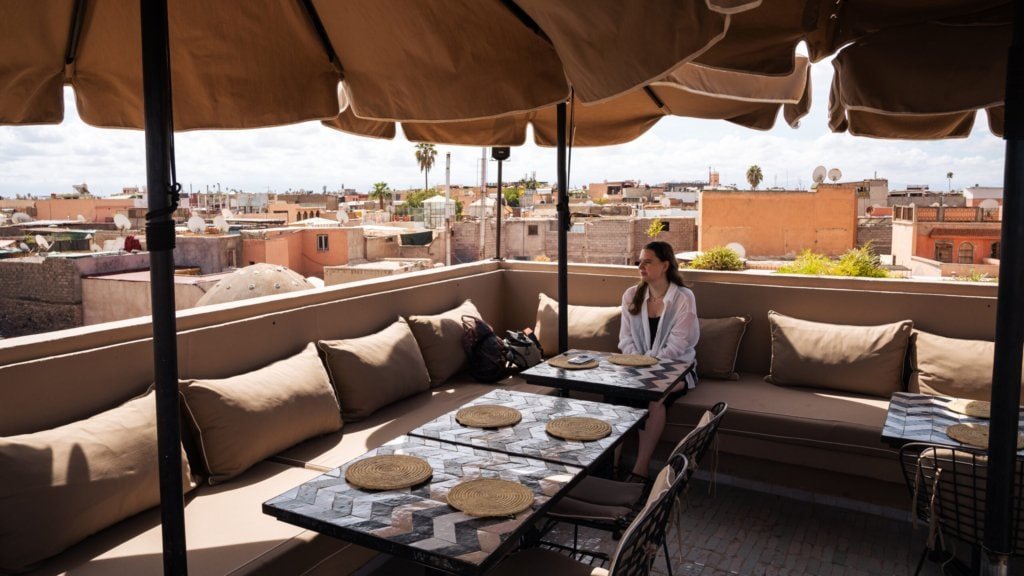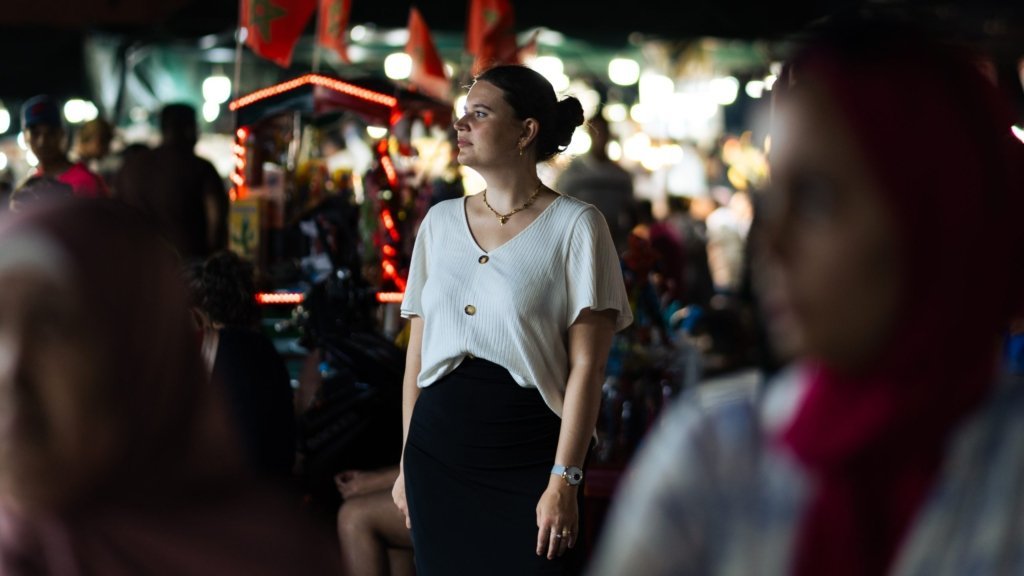Welcome to Marrakech, a vibrant city in the heart of Morocco that enchants travellers with its mix of history, culture and exotic flair. From the hustle and bustle of Djemaa el-Fna square to the beauty of the Koutoubia mosque, from the Ben Youssef medersa to the royal splendour of the Bahia palace, every corner of this city tells its own story.
Climate and location
Marrakech is located in the southwest of Morocco, nestled between the majestic Atlas Mountains and the vast foothills of the Sahara. The Mediterranean climate, with mild winters and hot summers, makes the city an attractive destination all year round. The warm sun and cool evenings create a pleasant atmosphere for exploring the city.
History
Marrakech has over a thousand years of history and was once the capital of the Almoravid and Almohad empires. This historical significance is reflected in the many impressive buildings that adorn the city. The old town, also known as the medina, has been declared a UNESCO World Heritage Site and is a living testimony to the past.
Religion and Culture
Islam plays a central role in the lives of the locals, which is reflected in the magnificent mosques and religious sites. The Koutoubia mosque, with its impressive minaret, is the city’s landmark. Visitors should be aware of religious customs and traditions and show appropriate respect.
Restaurants
Le Jardin: With its lush garden and Moroccan cuisine, Le Jardin is the ideal place for a relaxing dinner.
Atay Cafe: This charming café on Djemaa el-Fna square serves delicious mint tea and offers a great view of the city’s hustle and bustle.
Café des Epices: This trendy café is known for its varied menu, from fresh juices to delicious snacks – ideal for a quick break while strolling through the souks.
Nomad: With its modern Moroccan cuisine and stunning rooftop terrace, Nomad is a popular place to enjoy traditional flavours in a modern setting.
La Famille: Charming and family-run, this restaurant is a hidden gem, serving a small but delicious selection of vegetarian dishes in a relaxed atmosphere.
Cafe de France: A traditional café on the Djemaa el-Fna, ideal for a coffee or soft drink while watching the square go by.
The most beautiful spots in the city
Souks in the medina
The souks are a fascinating network of markets that wind like a labyrinth through the narrow streets of the medina. From hand-woven carpets and colourful pottery to fragrant spices and sparkling jewellery, there is an almost endless variety of goods. Negotiating, an ancient tradition, is an important part of the shopping experience, where you can put your haggling skills to the test. The atmosphere in the souks is unique. The narrow streets are filled with bright colours and smells, and the hustle and bustle of merchants selling their wares takes the visitor to another world.
Djemaa el-Fna
This lively square is the heart of Marrakech and a real treat for all the senses. By day, it is a bustling marketplace where traders hawk their wares and snake charmers, musicians and acrobats entertain passers-by. But it is after dark that the square reveals its true face. The smell of Moroccan specialities such as tajine and couscous wafts from the cooking stalls that line the square. The atmosphere is one of lively conversation, the rhythmic sounds of street musicians and the magical play of light from the lanterns.
Medersa Ben Youssef
The Ben Youssef medersa is one of the most important religious schools in Marrakech. Named after Sultan Ali ibn Yusuf, it is a masterpiece of art and knowledge. Young scholars once studied the holy books and sciences here. The medersa has a magnificent courtyard lined with intricate tiles and carvings.
The Koutoubia Mosque
The Koutoubia Mosque, one of Marrakech’s most famous landmarks, rises proudly into the sky. Its impressive minaret, inspired by the Giralda in Seville, is not only a testimony to Moorish architecture but also a symbol of the religious importance of the city. The muezzin’s call to prayer from the minarets adds a spiritual note to the city’s atmosphere.

Bahia Palace
The magnificent Bahia Palace is a masterpiece of Moroccan architecture. Built in the 19th century for the Grand Vizier Si Moussa, it is renowned for its stunning courtyards, cedar carved ceilings and ornate tiles. The extensive gardens provide an oasis of tranquillity where you can escape the hustle and bustle of the city.
Jardin Majorelle
This enchanting place was once created by French painter Jacques Majorelle and later acquired by Yves Saint Laurent and his partner. As you enter the Jardin Majorelle, you are greeted by a vibrant blue, “Majorelle blue”, which adorns the buildings and planters in the garden. This vibrant blue, combined with the lush greenery and colourful plants, creates a magical atmosphere that immediately captivates the visitor.
El-Badi Palace
El-Badi Palace, also known as ‘the unfinished’, is an impressive testimony to the past. Built in the 16th century during the reign of Sultan Ahmad al-Mansur, it was originally intended to be the most magnificent building of its time. Today, the monumental ruins bear witness to the palace’s former splendour. El-Badi Palace impresses with its spacious courtyards, richly decorated columns and imposing pool complex.
Marrakesh is undoubtedly a city of contrasts, where the traditional and the modern, the past and the present come together. The play of contrasts that is so alive in Marrakesh is reflected not only in its architectural treasures, but also in the way of life of its people. Here, tradition and modernity blend in fascinating ways, while the inhabitants proudly preserve their religious values and open their doors to the world.






























